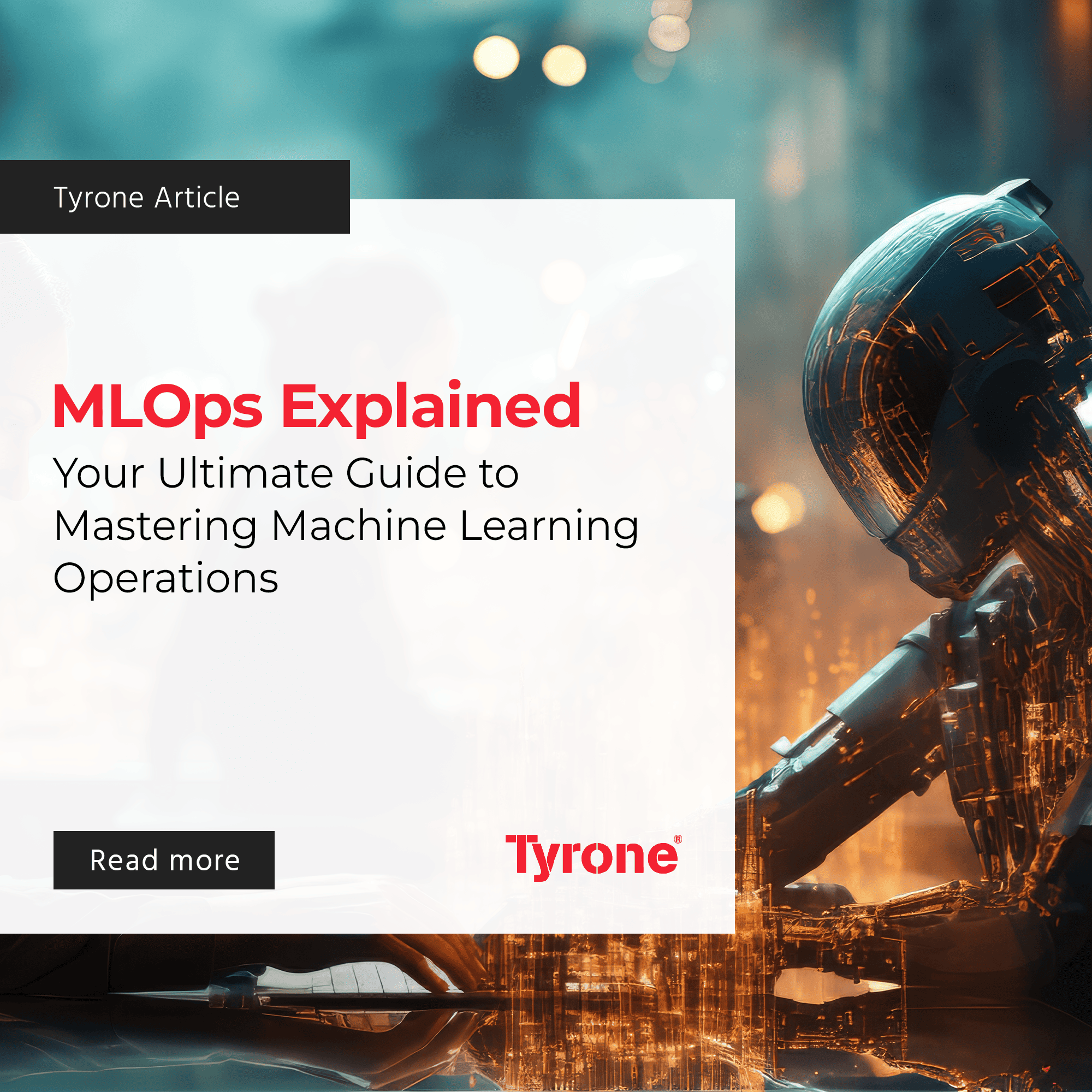Machine Learning Operations (MLOps) is revolutionizing how machine learning (ML) models are developed, deployed, and maintained. As a robust framework that bridges the gap between model development and operationalization, MLOps ensures seamless integration of ML systems into production environments. This guide explores the critical aspects of MLOps for stakeholders aiming to master the intricacies of managing ML projects effectively.
Understanding MLOps: What is it?
MLOps, a portmanteau of ‘machine learning and operations, mirrors the principles of DevOps but is specifically tailored for machine learning workflows. It involves automating the entire ML pipeline, encompassing data preprocessing, model training, deployment, and monitoring. MLOps facilitates collaboration between data scientists, DevOps engineers, and IT professionals, enhancing efficiency and reliability in ML operations.
The Importance of MLOps
MLOps is essential for transforming data science from experimental projects into productive operations. By implementing MLOps, organizations can :
Streamline Model Deployment and Monitoring :
Ensures that ML models are efficiently deployed and monitored in production environments, leading to more consistent performance.
Facilitate Collaboration :
Encourages collaboration between previously siloed teams, such as operations and data science, thus leveraging the expertise of both.
Accelerate Time-to-Market :
Automation of ML workflows accelerates model development and deployment, giving organizations a competitive edge.
Enhance Model Reliability and Maintenance :
Continuous monitoring and updating of models ensure they remain effective as data evolves.

Key Roles Involved in MLOps
MLOps is a collaborative effort involving various stakeholders :
Data Scientists: Focus on building and refining ML models.
DevOps Engineers: Handle the infrastructure and deployment automation.
IT Professionals: Manage and maintain the underlying systems and ensure security and compliance.
Best Practices in MLOps
Implementing MLOps requires adherence to certain best practices that ensure efficiency and reliability in ML operations :
1. Create a Well-Defined Project Structure
Establishing a clear project structure is fundamental. It involves organizing code, data, configurations, and models systematically. This structured approach aids in maintaining consistency, Reproducibility, and scalability across the ML project lifecycle.
2. Automate All Processes
Automation is the cornerstone of MLOps. Automate data collection, preprocessing, model training, deployment, and monitoring to minimize human intervention, reduce errors, and speed up the process.
3. Validate Data Sets
Data quality is crucial for ML success. Implement rigorous data validation practices to ensure that datasets are clean, consistent, and free from errors. This will safeguard against poor model performance due to data discrepancies.
4. Ensure Reproducibility
Reproducibility is vital for verifying and validating ML models. Maintain version control for code, data, and models to ensure that experiments can be replicated and results reproduced consistently.
5. Monitor Expenses
Cost management in ML projects is crucial, particularly due to the high resource demands. Track and optimize expenses related to computing resources, storage, and licensing to ensure financial sustainability.
Overcoming MLOps Challenges
Despite its advantages, implementing MLOps comes with its set of challenges. Here are some common obstacles and strategies to overcome them :
1. Insufficient Data Science Expertise
A lack of expertise can hinder the adoption of MLOps. Organizations should invest in training and development programs to upskill their teams in ML and DevOps practices.
2. Data Discrepancies
Data sourced from multiple origins often leads to inconsistencies. Centralizing data storage and establishing universal data mappings can mitigate these discrepancies and ensure data integrity.
3. Inefficient Tools and Infrastructure
Running complex ML experiments can be resource-intensive. Leveraging cloud-based solutions and adopting efficient experimentation tools can significantly enhance productivity.
4. Budget Constraints
ML projects often face financial limitations. Conducting thorough cost-benefit analyses and presenting clear ROI projections can help secure necessary funding and resources.

MLOps Best Practices for Stakeholders
- Collaboration Between Data Scientists and Operations Teams:
- A successful MLOps strategy hinges on the collaboration between data scientists, who develop models, and operations teams, who manage deployment and maintenance. Encouraging cross-functional teams ensures that operational concerns are addressed during model development and that data scientists are aware of deployment constraints.
- Automated Workflows:
- Automation is at the heart of MLOps. Automated workflows for data preprocessing, model training, evaluation, and deployment reduce the likelihood of human error and accelerate the time-to-market for ML solutions. Investing in tools that support automation can significantly enhance operational efficiency.
- Scalability and Flexibility:
- Stakeholders should prioritize scalability in their MLOps strategy. Cloud platforms like AWS, Google Cloud, and Azure offer scalable infrastructure that can handle large datasets and complex models. Additionally, choosing flexible tools and frameworks that can integrate with existing systems and adapt to future needs is crucial for long-term success.
Conclusion
MLOps is indispensable for any organization serious about operationalizing machine learning. By embracing best practices, leveraging advanced tools, and addressing common challenges, stakeholders can drive significant improvements in model development, deployment, and maintenance. As Al and ML continue to evolve, MLOps will remain at the forefront, ensuring that these sophisticated models deliver maximum value efficiently and reliably.












